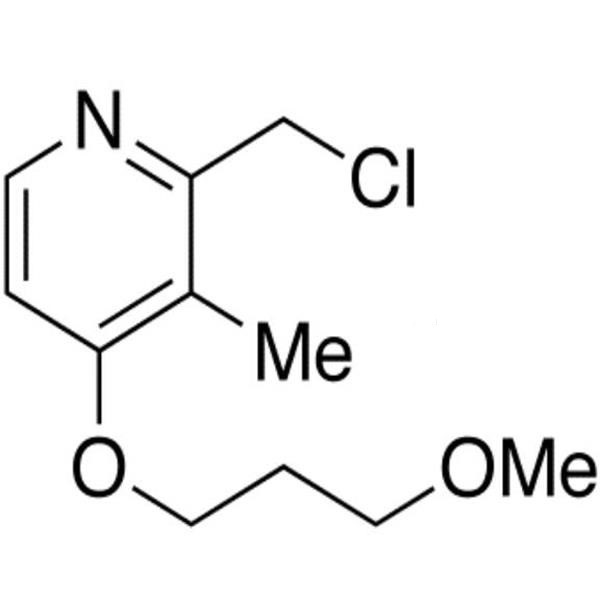Rabeprazole Chloride Compound CAS 153259-31-5 Assay >99.0% (HPLC) Factory
Shanghai Ruifu Chemical is the leading manufacturer of 2-Chloromethyl-3-Methyl-4-(3-Methoxypropoxy)pyridine Hydrochloride (Rabeprazole Chloride Compound) (CAS: 153259-31-5) with high quality, intermediate of Rebeprazole Sodium (CAS: 117976-90-6). Ruifu Chemical offers advanced, high quality pharmaceutical intermediates and active pharmaceutical ingredients (APIs).
Ruifu Chemical can provide worldwide delivery, competitive price, excellent service, small and bulk quantities available. Purchase Rabeprazole Sodium Intermediates, Please contact: alvin@ruifuchem.com
| Chemical Name | 2-Chloromethyl-3-Methyl-4-(3-Methoxypropoxy)pyridine Hydrochloride |
| Synonyms | Rabeprazole Chloride Compound; Rabeprazole Chloro Compound; Rabeprazole 2-Chloromethyl Impurity; 4-(3-Methoxypropoxy)-2-(Chloromethyl)-3-Methylpyridine Hydrochlorid |
| CAS Number | 153259-31-5 |
| Stock Status | In Stock, Production Scale Up to Tons |
| Molecular Formula | C11H17Cl2NO2 |
| Molecular Weight | 266.16 |
| Melting Point | 113.0~115.0℃ |
| COA & MSDS | Available |
| Origin of Product | Shanghai, China |
| Shelf Life | 24 Months When Properly Stored |
| Product Categories | Pharmaceutical Intermediates |
| Brand | Ruifu Chemical |
| Item | Specifications | Results |
| Appearance | Yellowish to Off-White Crystalline Powder | Off-White Crystalline Powder |
| Assay / Analysis Method | >99.0% (HPLC) | 99.82% |
| Loss on Drying | <0.50% | 0.20% |
| Water (K.F) | <0.50% | 0.17% |
| Residue on Ignition | <0.20% | 0.08% |
| Any Single Impurity | <0.50% | 0.08% |
| Total Impurities | <0.50% | 0.18% |
| Heavy Metals (as Pb) | <20ppm | <20ppm |
| Conclusion | The product has been tested and complies with the given specifications | |
| Usage | Intermediate of Rebeprazole Sodium (CAS: 117976-90-6) | |
Rabeprazole Chloride Compound (CAS: 153259-31-5) Method of Analysis
1 Test method
1.1 Put the sample on the white paper, observe the appearance, yellowish to off-white crystalline powder.
1.2 Moisture: According to the moisture determination method (the first method of Appendix Ⅷ M of the second part of the Chinese Pharmacopoeia 2010 edition), not more than 0.50%.
1.3 Purity: According to high performance liquid chromatography, determined according to law (Chinese Pharmacopoeia 2010 Edition, Part II Appendix VD).
Chromatographic Conditions:
Column: C18, 200mm×4.6mm, 5um;
Mobile Phase: Triethylamine buffer with pH 4.0 (take 6ml triethylamine in 1000ml water, stir well, use phosphoric acid Adjust pH value to 4.0) : Acetonitrile = 600:400 is mobile phase;
Detection wavelength: 254nm
Flow Rate: 1.0ml/min.
Analysis Method: Take about 30mg of this product, precision weighing, dilute with mobile phase to make a concentration of about 0.3mg/ml, take 20 μl was injected into the high performance liquid chromatography instrument and the chromatogram was recorded. According to the area normalization method, the purity is not less than 99.0%.
Package: Bottle, Aluminium foil bag, 25kg/Cardboard Drum, or according to customer's requirement
Storage Condition: Store in sealed containers at cool and dry place; Protect from light and moisture

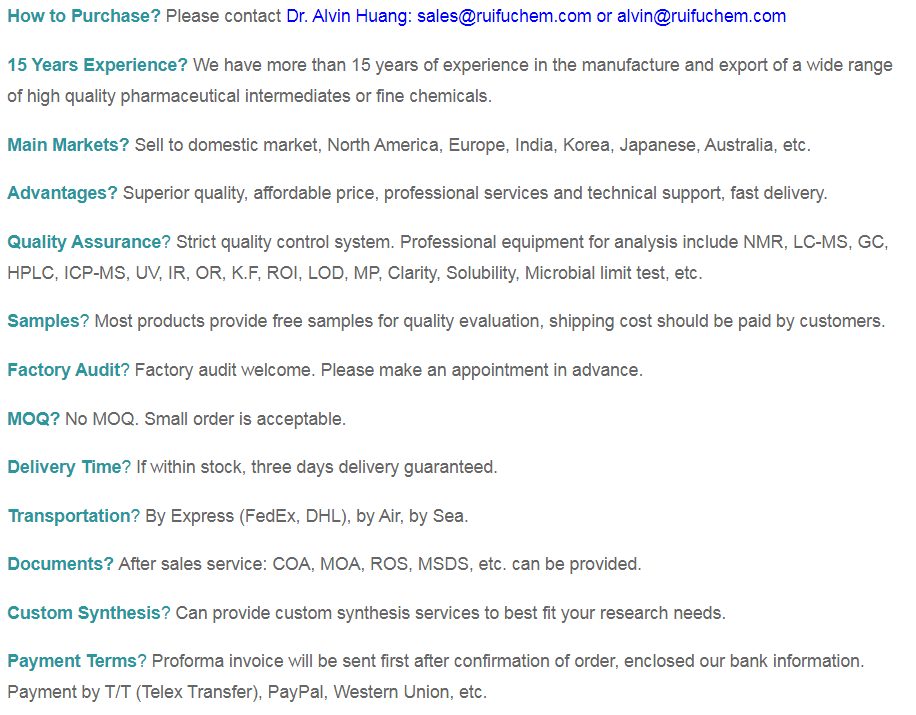
2-Chloromethyl-3-Methyl-4-(3-Methoxypropoxy)pyridine Hydrochloride, Rabeprazole Chloride Compound (CAS: 153259-31-5) is an intermediate of Rebeprazole Sodium (CAS: 117976-90-6). Rabeprazole Sodium is a anti-ulcer disease drug belonging to proton pump inhibitor and is the sodium salt form of Rabeprazole. The Japanese company Eisai had successfully developed it for the first time with the trade name being “Bolite”. The function of the proton pump inhibitors is reducing the gastric acid secretion so that the lesion site can be stable in order to achieving the effect of curing gastric and duodenal ulcers and stomach-esophageal reflux disease. Clinically it is majorly used for the treatment of acid-related diseases such as stomach and duodenal ulcers, peptic ulcer, gastroesophageal reflux disease and zollinger-ellison syndrome. Rabeprazole is a kind of benzimidazole-substituted compounds. It inhibits the secretion of gastric acid through forming bond with the cytoplasmic proton pump in the gastric cavity wall. This product can specifically inhibit the effect of the adenosine triphosphatase that is the key enzyme during the production of stomach acid. It has inhibitory effect on both basal gastric acid and the gastric acid secretion caused by the stimulation.
-
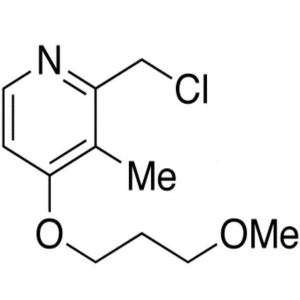
Rabeprazole Chloride Compound CAS 153259-31-5 A...
-

Rabeprazole Hydroxy Compound CAS 675198-19-3 Pu...
-

Rabeprazole Sodium CAS 117976-90-6 Purity >99.5...
-
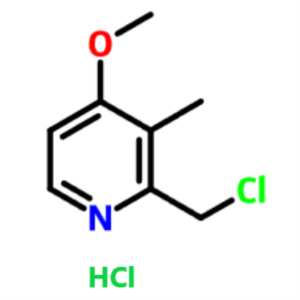
2-Chloromethyl-4-Methoxy-3-Methylpyridine Hydro...
-

Omeprazole CAS 73590-58-6 Assay >99.5% API Fact...
-
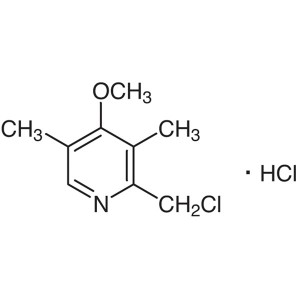
Omeprazole Chloride Compound CAS 86604-75-3 Pur...
-

Omeprazole Hydroxy Compound CAS 86604-78-6 Puri...
-

Omeprazole Sulfide CAS 73590-85-9 Purity >99.0%...
-

2-Mercapto-5-Methoxybenzimidazole CAS 37052-78-...
-

2-Cyano-3-Methylpyridine CAS 20970-75-6 Purity ...
-

Lansoprazole CAS 103577-45-3 Assay 98.0~102.0% ...
-

(R)-Lansoprazole Dexlansoprazole CAS 138530-94-...
-
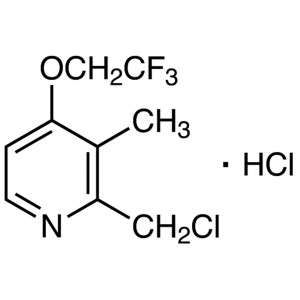
Lansoprazole Chloride Compound CAS 127337-60-4 ...
-

Pantoprazole Sodium CAS 138786-67-1 Purity ≥99....
-
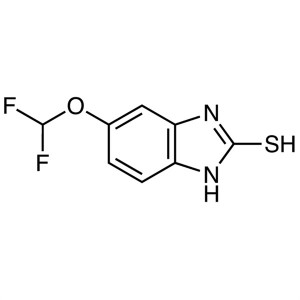
5-(Difluoromethoxy)-2-Mercaptobenzimidazole CAS...
-
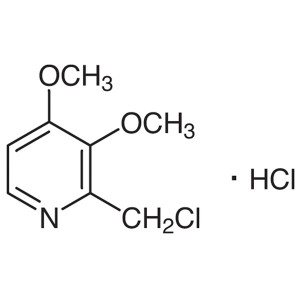
2-(Chloromethyl)-3,4-Dimethoxypyridine Hydrochl...

